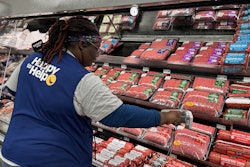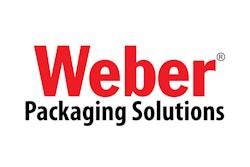
For those Consumer Packaged Goods professionals who have been following the industry for the last two decades, Walmart’s recent radio-frequency identification (RFID) tagging mandates may feel a lot like déjà vu. Walmart’s history with RFID mandates dates back to 2003 when it became the first retailer to require its suppliers to apply RFID tags to cases and pallets of incoming product or to individual products, if they were of high value. Per its mandate, its top 500 suppliers were to have implemented the technology by 2006.
During that time, RFID was all the hype in industry circles. But by 2007, almost every supplier had failed to meet their deadline, and the program fizzled out due to the challenges presented by the early-stage technology and the prohibitive cost of implementation.
Fast forward 20 years, and most of the early kinks in RFID technology have been ironed out. As a result, four years ago, Walmart successfully implemented RFID tagging for apparel and accessories, and since 2022, it has been steadily adding general merchandise categories to its list of mandated products. Among them are items found in automotive, electronics, toys, sporting goods, home, entertainment, and other departments.
 | Read this related article from 2006, "RFID reluctance remains," to learn what RFID challenges brands were dealing with then. |
In 2023, Walmart supplier and paper converter Paris Corp. of Westampton, N.J., learned that hardlines such as its stationery products were next on the list for RFID tagging. Over the next 12 months, through much trial and error, a team at Paris led by Senior Product Manager Berdj Mazmanian developed its own custom RFID program, meeting Walmart’s deadline of Feb. 1, 2024.
Working closely with its tag supplier, FineLine Technologies, and a proprietary equipment supplier, the company selected a Walmart-approved tag, developed hardware and software to print, encode, and apply the tags in-house, specified pre-encoded tags for its third-party providers, and adopted a quality control app for ensuring the accuracy of the data on the tags before shipment.
Why RFID and why now?
RFID is a wireless technology that uses radio waves to identify, track, and manage a tagged object. RFID tags are made up of an integrated circuit (IC), an antenna, which communicates with an RFID reader, and a substrate into which the components are embedded. The IC, also referred to as the chip, is the part of an RFID tag onto which identifying information such as serialization is encoded. An RFID inlay consists of the antenna and chip. RFID tags can be active or passive. Active RFID tags require their own power source, while passive tags—the type required by Walmart—receive power from the antenna.
The advantage of RFID tags over barcodes is that they don’t need a direct line of sight to be read. If the signal is strong, several tags can be read at one time, saving time and labor costs. To comply with Walmart’s RFID packaging requirements, suppliers must use Gen 2 UHF (Ultra High Frequency) RFID tags, which operate at a frequency of 902 to 928 MHz, allowing for reliable and efficient communication between the tags and the retailer’s RFID readers.
RFID’s utility for retail environments is in inventory management. In Walmart’s case, it allows the retailer to track products within its stores, resulting in reduced stockouts and improved efficiency.
Says Walmart, “Since beginning to implement RFID technology in 2020, we have seen dramatic results, with improved on-hand [available inventory] accuracy leading to increased online order fulfillment and customer satisfaction. We believe RFID will help improve inventory accuracy more broadly across our assortment, which leads to a better in-store shopping experience for our customers, more online and pick-up in-sto
 | Read this related article, “Live from GS1 Connect: Decathlon Revolutionizes its Ops with RFID” |
What prompted Walmart to revive its RFID program was the rise in online fulfillment brought about by the pandemic, along with the improvements made in RFID technology and the reduction in the cost of the tags since 2003.
“The importance of omni-channel in the marketplace has grown exponentially since our last RFID effort. We know we have an opportunity with correcting on-hands [available inventory],” the retailer says. “After reviewing the technology and state of the industry, we have proven in apparel and GM [general merchandise] that tags, hardware, and software are better now.”
Walmart’s mandate requires that suppliers apply RFID tags to individual items using inlays verified by Auburn, Ala.-based Auburn University RFID Lab, a research institute that focuses on the business case and technical implementation of RFID. A playbook from Walmart lists inlay suppliers for different categories.
Brand owners are also responsible for figuring out how to print, encode, and apply the tags to their products. For its part, Walmart says it’s investing capital for hardware in all of its U.S. large-format stores, as well as software development and training for its associates.
Says the retailer, “We expect this to be a joint investment by both Walmart and our suppliers.”
Key to compliance starts with the proper inlay
When Paris was informed by Walmart in 2023 that its products would be required to carry RFID tags, the team knew it would be a challenge, but not an insurmountable one. “We weren’t panicked because we’ve had to react to a variety of different customer requests and mandates over the years. But we all knew it was going to be a task by the team to implement RFID within Paris,” says Mazmanian.
In the early 2000s, Mazmanian worked for another Walmart supplier. Back then, brand owners had more apprehension over the mandates because of a lack of knowledge about the technology and worries over the security of personal information with the tags. “I think that slowed the progress down a little bit for Walmart,” he notes. “But here we are 20 years later, and they’ve implemented it in various departments. So we started looking into what we needed to do based on the Walmart playbook.”
Paris supplies approximately 13 SKUs to Walmart, with that number changing annually. Among its products are paper, cardstock, color multipacks for arts and crafts, and photo paper. While some items are converted in-house, others are provided to Paris by third-party suppliers—one in China, two located domestically.
 RFID tags for Paris’ stationery products for Walmart are embedded into pressure-sensitive labels (indicated by arrow) whose placement on a product is determined by guidance from the Auburn University RFID Lab and the packaging type.
RFID tags for Paris’ stationery products for Walmart are embedded into pressure-sensitive labels (indicated by arrow) whose placement on a product is determined by guidance from the Auburn University RFID Lab and the packaging type.
Upon reviewing the playbook provided by Walmart, the Paris team realized its first task was to find an inlay supplier approved through the Walmart system. Mazmanian says they were looking for a supplier that could provide a tag that was physically small, approximately 1.8 x 0.7 in. (45.7 x 17.8 mm). “A couple of our products are small, and we wanted to have a commonality,” he says.
After evaluating products from six or seven companies, Paris selected FineLine as its supplier. In addition to offering the right pricing, FineLine was also able to meet both Paris’ in-house needs as well as those of its suppliers. “They seemed best suited to handle all four of those prongs of the project,” says Mazmanian.
According to FineLine Director of Product Management Danika Manchester, FineLine has been supplying RFID tags for apparel and non-apparel manufacturers for years and is listed by Auburn as a packaging provider that uses ARC certified inlays. ARC is the Auburn University standard that ensures RFID tags are able to meet or exceed the required levels of performance and quality. Walmart links to the Auburn site where suppliers whose tags meet ARC specifications for each category are listed.
“We work with the product manufacturer to determine what their ARC spec is and what inlay will fit best on their product, whether they are hand applying it or using an automatic applicator,” says Manchester. “And then, depending on whether they’re putting the inlay inside or outside of the product, we determine the print format.”
In-house encoding and printing allow for flexibility
FineLine supplies two tag products to Paris. For the paper converter’s in-house use, it provides blank stock, which comprises an inlay embedded in a pressure-sensitive label with a thermal transfer-printable face. For Paris’ third-party suppliers, it supplies tags that are encoded and printed, ready for application.
Paris brought label encoding, printing, and application in-house for several reasons. “We wanted to have the ability to purchase a single blank tag and be able to program and print-and-apply the appropriate information onto the tag for whatever product is running on the line that day,” says Mazmanian. “That allowed us to streamline inventory. We don’t have to keep multiple tags, we don’t have to worry about wrong tag application, and those kinds of things.”
It also allows for some flexibility as to where the label is applied on the package. Auburn provides recommendations on where tags can be placed based on category and product type. Working within those guidelines, Paris applies the tags in such a way that sustainability is maximized and none of the paper is compromised.
 Paris worked with a proprietary equipment manufacturer to build custom equipment to encode RFID tags and print-and-apply the labels in-line during packaging operations.
Paris worked with a proprietary equipment manufacturer to build custom equipment to encode RFID tags and print-and-apply the labels in-line during packaging operations.
For example, Mazmanian explains, for Color Kraft Paper, the tag is applied to a sell sheet on top of the ream, which is then wrapped with clear film. “We apply the RFID to that cardstock cover sheet to try and maximize sustainability issues because I don’t want to put a tag on a piece of film that’s store recyclable.”
For some packages that are not see-through, Paris places the tag inside or, in the case of a ream of paper with a printed wrap, the label is placed on the outside. Paris’ third-party suppliers, who receive tags already encoded by FineLine, put the tag on the outside of the package.
When Walmart mandated RFID tagging in the early 2000s, suppliers were required to put tags only on cases and pallets or directly on the packaging for high-value items. At that time, the cost per tag was approximately 30 cents. According to FineLine Technologies CEO and Chairman of the Board George Hoffman, the industry average cost for a tag today ranges from four to six cents, depending on volume, making item-level tagging economically viable. In addition, the cost of tag readers and other complementary equipment has come down as well.
Encoding poses the biggest challenge
Per Walmart’s requirements, Paris is printing a Paris item number, an item UPC in numbers form only, a brief item description, and the GS1 Electronic Product Code (EPC) symbol on the label. According to Walmart’s guidelines, “The tag must be labeled with an EPC logo showing the customer where the tag is located so it can be properly disposed.” Paris encodes the inlay with an EPC code, which includes the UPC code and a serial number unique to each tag.
For tag encoding and label printing and application, Paris worked with a proprietary machinery manufacturer that built two custom systems integrated into two full production and packaging lines for products bound for Walmart. The systems incorporate printer/applicators from Weber and software-enabled Zebra ZE511 print engines that encode the chips. The software, one of the most difficult pieces of the puzzle, was custom designed.
There are four steps to RFID tag encoding. The first is to gather the data that needs to be stored on the label. Once the data is collected, it needs to be formatted for storage on the label. This typically involves converting the data to a specific format or protocol that the RFID system can understand. Walmart suppliers are required to use SGTIN (Serialized Global Trade Item Number)-96 encoding, which includes the GTIN (UPC or EAN) and serial number. Next, the formatted data is written to the microchip on the RFID label. The encoder, in Paris’ case the Zebra ZE511, communicates with the RFID label and transfers the data to the label’s memory. The last step is locking the data to prevent unauthorized changes.
Says Mazmanian, “We had to develop the software component that fed into the Zebra language and accepted our data to program each tag. Every item gets a unique tag signature, so all that information has to be relayed correctly to the Zebra machine, and that’s what has taken us many, many months to accomplish.
“A lot of work went into figuring out how to be able to print in-house across the number of SKUs we manufacture out of this facility.”
QC app allows for verification
Another major issue back in the day that slowed adoption of RFID was unreadable or incorrectly programmed inlays. While RFID technology has improved significantly in terms of read sensitivity and accuracy, in setting up its program, Paris still wanted to verify its tags were accurate before product left the facility. This was especially important with the products coming from its third-party suppliers.
To ensure tags are encoded correctly and placed on the right product, FineLine provided Paris with a quality control app called QCtrak. “You can read the human-readable part of the label easily, but you can’t read the programming inside the chip without some sort of software and an appliance,” says Mazmanian. “So FineLine provided us with the application along with a simple handheld reader that does the reading and interacts with software for QCtrak.
After downloading QCtrak to his smartphone, Mazmanian used a tutorial provided by FineLine and was able to master QCtrak in 15 minutes. He’s now able to verify “any RFID tag in the plant for any purpose,” he says. Paris is using QCtrak for batch inspection and to inspect the first and last tags on a run to confirm the program and serialization are correct.
According to Hoffman, FineLine has been using QCtrak since 2013 for its own purposes. “We’ve used the methodology in-house for more than 10 years, so it’s integrated into our entire global platform. We make billions of RFID labels, so we have to make sure that each one is properly encoded.
“We have a lot of experience. Everything you’re not supposed to do to an RFID label, we probably know it and have now prevented it through enhancements to the software.”
 An example of FineLine’s QCtrak app, which allows Paris to check that RFID chips are properly encoded before products leave the facility.
An example of FineLine’s QCtrak app, which allows Paris to check that RFID chips are properly encoded before products leave the facility.
With the most recent update of QCtrak, FineLine developed a kit for end users that includes a Zebra TC22 mobile computer and an RFD40 sled reader. “We chose Zebra because we’re part of their PartnerConnect program, and they lead the industry in RFID readers,” says Manchester. “These are the two newest models available, and they are field upgradable as things get updated over time.”
QC Trak is also integrated with FineLine’s FASTtrak platform, which Hoffman says drives FineLine’s entire business. FASTtrak is a cloud-based application that serves three functions. First, it’s the mechanism through which retailers upload purchase orders and SKU data. Second, it serves as the ordering platform for merchandise suppliers. For Paris, that includes labels for its own in-house needs as well as for its third-party suppliers.
“The third thing that’s probably most important is that when you combine those two things—retail data and vendor demand for the product—that’s enough for us to make a ticket,” explains Hoffman. “FASTtrak then drives our network of company-owned print hubs, so there’s no human intervention at all until it comes out the other end of a digital printer or encoding machine.”
Because of FASTtrak, Hoffman says FineLine is able to ship an order to a customer within 48 hours versus the three weeks it takes some of its competitors.
Says Manchester, QCtrak is a window to the FASTtrak platform. QCtrak is part of the FASTtrak Mobile app. Once an operator reads a tag with QCtrak, they can click on the tag data, and it will show them the order FineLine processed to commission the RFID tag data and who the label order was shipped to. FASTtrak also collects the data from a QCtrak scan, allowing FineLine to run reports on the customer’s quality control, which can also be used by suppliers to show retailers they are meeting compliance requirements.
Good for Walmart, good for Paris
While Mazmanian says that his company adopted RFID solely because of Walmart’s mandate—“it’s Walmart, you have to do it”—he also admits that the technology will be a tool Paris can use in-house for its own quality and inventory purposes.
“We did not voluntarily do RFID,” he says, “but having gone through the Walmart mandate, now that we have some of the equipment and the readers in-house, the opportunity to streamline some of our existing processes is real.
“It allows us multiple steps of verification. We can QC-check product coming off the production line, we can check our inventory against other records, and we can verify the right product is at the loading dock when Walmart is scheduled to come pick it up. We currently have internal systems so that if there is a problem with a lot, we can identify it. But an RFID tag is a quicker way to get to that identification because we can identify all the serial numbers in that lot, the total number of products in that lot, and the shipping date. A lot of the information we would get in one current process could be sped up by using RFID internally.” PW



























